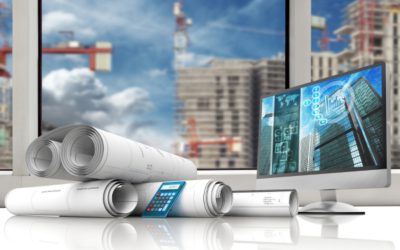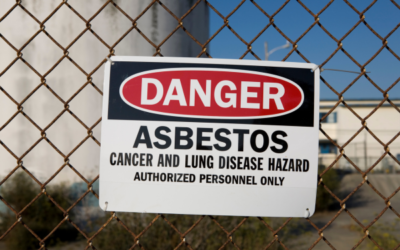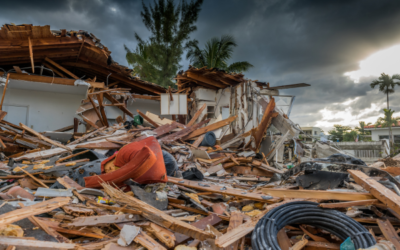Developing Sustainability Strategies – Writing Your Future History
E. Mitchell Swann MDCSystems® Consulting Engineer May 2011 Yup, yet another "sustainability" article. It seems that this subject just won't die. No, it won't. But organizations that don't deal with the subject just might experience that result. If you haven't been...
The Use of Technical Experts as Neutrals in ADR for Complex Construction Disputes
E. Mitchell Swann, P.E.
MDC Systems®
Consulting Engineer
A hot topic in the world of ADR (Alternative Dispute Resolution) is the extent to which ‘neutrals’ should be qualified and what type of qualifications they should have. Often, the first reaction is that the neutral should have legal training as their predominant skill and some experience with the subject matter of the case. As part of the program at the American Bar Association’s ADR Section Meeting in Los Angeles in April 2005, MDC Systems®, along with the other contributors to this article, discussed the use of technical experts as neutrals in ADR proceedings. Below is a summary of the key issues, ideas and opinions addressed and presented by the panel. The panelists come from varied backgrounds but all have participated in ADR proceedings in one form or another.
The Project is Flat -Technology Blurs the Lines & Sharpens the Edge
Anyone who has read Thomas Friedman’s “The World Is Flat” might glean an idea of where this article is going right away. If you haven’t read the book, it is a good one. About 2 years ago MDC Systems® presented at the London Construction Superconference on some of the benefits, challenges and issue associated with the use of 3D and 4D modeling technologies in the design, documentation and delivery of capital projects. Since that time, there have been even more developments – not just in the nature of the technology, but also in the level of accessibility or breadth of application. This expanded modeling regimen has come to be called Building Information Modeling or BIM.
Construction Defaults: The Need for Expert Advice
A construction project in default is an emotionally charged situation, with many parties exposed and a lot of money at risk. The owner’s use of the facility will be delayed. The contractor’s work on the project and perhaps years in business may come to an end. The designer’s envisioned project is on hold. The surety faces an uncertain exposure.
Fukushima Dai-Ichi: When Culture Trumps Engineering Judgment and the Scientific Method
In recent articles1, MDC Systems® has examined the Fukushima Dai-Ichi nuclear plant explosion and meltdown disaster. Recently a Japanese investigative report2 has provided new insight into the cultural conditions which precipitated the disaster and contributed to the expanse and breadth of the effects of the continuing radiation contamination. While it is well-known that a tsunami generated from a powerful undersea earthquake initiated the incident, what has been difficult to understand is how a modern society with very sophisticated engineering and management skills ignored established nuclear industry standards and practices (Design Basis Events) and safety guidance (Station Blackout) norms and failed to anticipate the events that occurred leading to the nuclear plant meltdown conditions.
What Corporate Counsel Needs to Know About Buying and Renovating Properties With Asbestos: Practical Strategies
Originally printed in The Metropolitan Corporate Counsel, April 1999
When legislation passed Congress 15 years ago, requiring schools to be inspected for asbestos, a new industry was born. Surveying the nation’s schools was a big task, performed in the public eye. This article looks at the evolution of trends and public perception relating to asbestos abatement in management, abatement methods, pricing, competition, health risk, legal liability, and court precedent.
Marcellus Shale: Future Energy Source or Fracking Mess?
Written by Don Keer, PE, MDCSystems® Consulting Engineer The Marcellus Shale natural gas deposit is currently the focus of intense exploration and development that could provide energy for the entire U.S. for the next 100 years. As with any development of an energy...
The Internet of Things : Managing Risk & Reward
A hot topic in the industry today is the “Internet of Things” (IoT). The IoT is the use of “smart” devices, transmitters and systems to facilitate the real time transmission of information, control of equipment and optimized operation of systems; often including or via some Internet-based communication network. The objective is to make the information available anywhere, easily and in real time to improve decision making and operations. Information is collected by the devices and transmitted via a wireless network to a centralized and/or cloud-based “head end” and control commands are sent back via the same system. The IoT has been enabled by advances in the miniaturization of computer processing power, the development of interoperable communications and processing platforms and the growing ubiquity of high-speed, wireless, broadband networks. That’s the stuff that puts your email on your smartphone.
Understanding and Surviving Project Complexity
The article Complexity is Often the Culprit in Cost Overruns and Delays was published last year in the MDCAdvisor® (March, 2014) and garnered much feedback. In today’s article we will revisit the Complexity and Systems Thinking topics and foster additional discussion of how and why project failures are driven by complexity. Complexity often arises to frustrate even the best efforts of Architects, Engineers and Contractors working to complete projects on time and budget.
Hurricane Sandy – Another Storm, Same Recovery Challenges
In my personal experience, gasoline lines (fuel shortages) and communications problems have been predictable after effects of major storms for fifty years. My first storm recovery effort was Hurricane Agnes in 1972. At the time I was a student at Penn State University (recently released from four years of active duty) and a Captain in the Pennsylvania National Guard based out of Lewistown, PA. During the storm we performed rescue and evacuation work in and around Lewistown and then food distribution and fuel delivery to local municipalities on the I – 80 corridor from Altoona to Scranton. Many roads were destroyed in Central Pennsylvania and many bridges were missing resulting in isolation for many communities.










